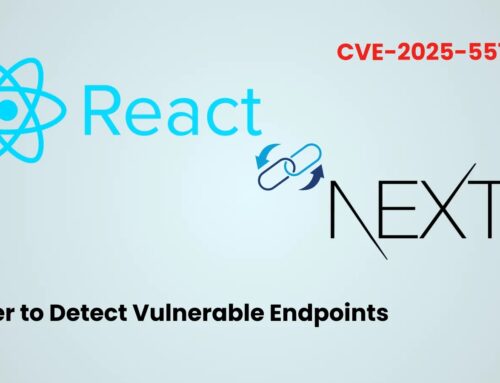
Best MSP Software: The Essential Tech Stack
Navigating the MSP Software Landscape: Building Your Essential Tech Stack
For Managed Service Providers (MSPs), a robust and efficient technology stack isn’t just a luxury; it’s the bedrock of sustainable growth and client satisfaction. Yet, with a burgeoning market of solutions, the question remains: how do you discern the truly essential tools from the merely optional? This guide delves into the core components of a successful MSP tech stack, separating the pervasive from the pivotal, to help you build an operational framework that scales with your ambition.
The Foundation: Professional Services Automation (PSA)
At the heart of almost every successful MSP lies a sophisticated Professional Services Automation (PSA) platform. This isn’t just a CRM; it’s the operational hub coordinating everything from ticketing and project management to billing and time tracking. A well-implemented PSA streamlines workflows, improves efficiency, and offers critical insights into service delivery and profitability. Think of it as the central nervous system for your entire operation.
Remote Monitoring and Management (RMM) for Proactive Support
The ability to proactively monitor and manage client endpoints, servers, and network devices remotely is non-negotiable for an MSP. Remote Monitoring and Management (RMM) software empowers technicians to detect and remediate issues before they escalate, often without requiring an on-site visit. This capability is key to delivering consistent uptime, building client trust, and optimizing technician productivity. From patch management to script execution, a powerful RMM is your team’s eyes and hands across all client environments.
Managed Antivirus and Endpoint Detection and Response (EDR)
In today’s threat landscape, traditional antivirus is a foundational but insufficient defense. Managed Antivirus, coupled with Endpoint Detection and Response (EDR) solutions, provides a multi-layered approach to endpoint security. EDR goes beyond signature-based detection, monitoring endpoint activity for suspicious behaviors, and providing advanced threat hunting and response capabilities. This proactive posture is critical for protecting client data and maintaining their operational integrity. For example, understanding how to address common vulnerabilities exploited by ransomware, such as those that might target unpatched systems (though no specific CVE is given for this broad threat, awareness of CVE-2023-34048 in VMware vCenter Server regarding authentication bypass for specific versions, illustrates the critical need for robust patch management a good EDR system assists with).
Backup and Disaster Recovery (BDR): Ensuring Business Continuity
Data loss, whether from hardware failure, cyberattack, or human error, can be catastrophic for any business. Comprehensive Backup and Disaster Recovery (BDR) solutions are paramount for MSPs. These solutions ensure that client data is regularly backed up, readily recoverable, and that business operations can be swiftly restored after an incident. A robust BDR strategy provides invaluable peace of mind for both the MSP and their clients.
Network Monitoring and Management (NMM)
While RMM focuses on endpoints and servers, Network Monitoring and Management (NMM) tools provide granular visibility into the health, performance, and security of client network infrastructure. This includes switches, routers, firewalls, and Wi-Fi access points. NMM helps identify bottlenecks, detect unusual traffic patterns, and diagnose connectivity issues, ensuring optimal network performance and availability.
Identity and Access Management (IAM)
Controlling who has access to what, and under what conditions, is a critical security and compliance concern. Identity and Access Management (IAM) solutions help MSPs manage user identities and their access privileges across various client systems and applications. This enhances security by enforcing the principle of least privilege, reducing the attack surface, and simplifying user onboarding and offboarding processes. Implementing multi-factor authentication (MFA) through an IAM platform is a fundamental step in preventing unauthorized access.
Security Information and Event Management (SIEM)
For MSPs offering advanced security services, a Security Information and Event Management (SIEM) system is essential. SIEMs aggregate and analyze security logs from various sources across client environments, providing a centralized view of security events. This allows for real-time threat detection, correlation of seemingly disparate events, and facilitates incident response. While often complex to implement and manage, a well-tuned SIEM offers unparalleled visibility into potential security breaches.
Remediation Actions for a Robust MSP Stack
- Regularly Review and Optimize: Technology evolves rapidly. Regularly assess your current stack against industry best practices and emerging threats. Are your tools integrated effectively? Are there redundancies?
- Prioritize Integration: Seek out solutions that offer strong integration capabilities with your existing tools, particularly your PSA and RMM. Seamless data flow reduces manual effort and improves accuracy.
- Invest in Training: The most sophisticated software is only as good as the team using it. Invest in continuous training for your technicians on all components of your tech stack.
- Establish Clear Processes: Define clear standard operating procedures (SOPs) for using each tool within your stack. Consistency is key to efficiency and service quality.
- Leverage Vendor Support: Don’t hesitate to utilize the support and training resources offered by your software vendors. They are experts in their products.
The Essential Toolkit for MSP Success
Building a successful MSP business hinges on more than technical prowess; it requires a strategic approach to technology adoption. By carefully selecting and integrating a robust stack of Professional Services Automation (PSA), Remote Monitoring and Management (RMM), advanced endpoint security (Managed Antivirus/EDR), comprehensive Backup and Disaster Recovery (BDR), Network Monitoring and Management (NMM), Identity and Access Management (IAM), and, where appropriate, Security Information and Event Management (SIEM), MSPs can deliver unparalleled service, protect client assets, and secure their own growth trajectory in a competitive market.





